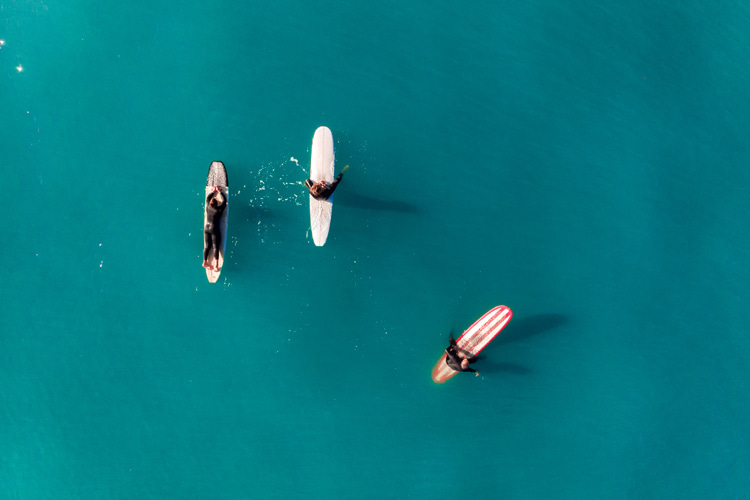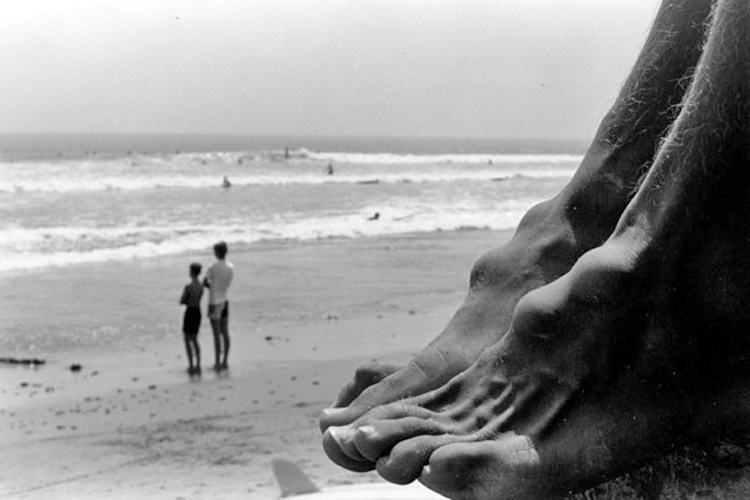The surfer's knot is a cutaneous condition that results in the development of bumps and lumps in the chest, legs, and feet of wave riders.
Although commonly and erroneously associated with malignant tumors, the surfer's knot is a benign condition.
It is not fluid in bone joints - it is the overgrowth of connective tissue on the toes, below the knees, and on top of the feet.
The surfer's knot is more common in boardriders who paddle in a kneeling position, but they can also appear in the upper body of shortboard surfers.
The simple dragging of the back foot on the surfboard during take-off could accelerate the development of this unpleasant condition.
Surfer's knots, also known as surfer's knobs or surfer's knees, could start appearing after long periods of time surfing.
Surfer's knots are also more frequent in beginner surfers who have not yet fine-tuned the pop-up technique and still need to drag their back foot for a while to catch the wave.
Surfers living in warm water regions and who don't wear wetsuits have less knee and foot protection and padding than those who need thick neoprene and boots.
Thus, they are more prone to developing surfer's knots.
A surfer's knot can be painful - any contact with the surfboard or even walking can hurt and be extremely uncomfortable.
The good thing is that, unlike the surfer's ear, this is a reversible condition.
How can you treat surfer's knots? Pause your surfing activities for a while until the cutaneous growth heals completely.

Longboarding and Knee Paddling
The surfer's knots were more common and frequent in the 1960s when surfers paddled out the back and into waves on their knees.
Geoff Booth, Kevin Starr, and Mark Renneker, authors of "Sick Surfers Ask The Surf Docs & Dr. Geoff," explain the origins of this unusual condition.
"Resulting from knee-paddling the longer boards of that era, and aggravated by epic applications of paraffin wax, friction on the otherwise unpadded knees and feet would lead to a heaping up of callous, cause the tissue under the skin to form into a soft pad, and sometimes irritate the underlying bone to form bone spurs."
The doctors note that the "hand impregnated by sand to rough it up" made the condition even worse and that "full wetsuits and booties didn't come into widespread use until the late 1960s."
Interestingly, at a certain moment in time, the surfer's knots were something to show off and the greeting card of an accomplished surfer - the bigger the knots, the better the surfer.
Ron Stoner, one of the greatest surf photographers of the 1960s, was one of the first to capture this odd condition through his lens.
Initially, the medical community was intrigued, and several worldwide medical journals published reports on these surfer-specific peculiarities.
"Fortunately, the knots proved to be largely harmless, seldom became infected, did not signify cancer, and usually disappear if the surfer gave up knee paddling - which is just what happened in the late 1960s when surfing shifted to the shortboard," the specialists add.
However, with the longboard and nose riding resurgence, the surfer's knot could very well return.
The chest knot is less common but might appear on the lower side of the rib cage after regular and prolonged contact with a surfboard's deck.
If you notice surfer's knots are starting to appear regularly or if you experience unprecedented pain, visit an orthopedist or a sports medicine specialist.
